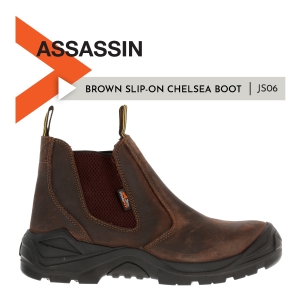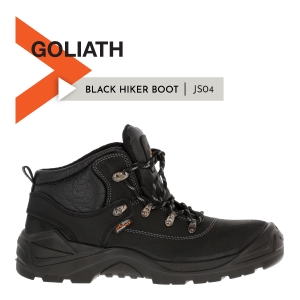Leather is a popular material for safety footwear due to its durability, comfort, and breathability. However, leather is not naturally waterproof because it is a porous material. The pores in leather allow water to seep through, making it susceptible to moisture damage when exposed to rain or wet conditions.
Leather’s porosity comes from its natural structure. The skin’s pores and fibres absorb water, which can lead to the leather becoming saturated. When leather gets wet, it can lose its flexibility, become stiff, or even develop mildew if not properly dried. While various treatments and coatings can make leather water-resistant to some extent, they do not render it completely waterproof.
To address the need for footwear that is completely impervious to water, gumboots (also colloquially known as wellingtons or rubber boots) are the ideal solution. Gumboots are made from rubber or synthetic waterproof materials, which are non-porous and create a seal against water. The continuous, seamless design of gumboots ensures that water cannot penetrate the footwear, keeping the feet dry even in the most extreme wet conditions.
Gumboots are specifically designed for environments where feet need to be shielded from wet conditions, such as agricultural settings, outdoor work, and certain industrial environments. Their waterproof nature is achieved through the use of rubber or similar materials that do not allow water to pass through, and their construction often includes high sides that prevent water from entering through the top of the boot.
While leather is valued for its comfort and durability, it is not waterproof due to its porous nature. Gumboots, made from rubber or similar materials, offer a perfectly waterproof solution due to their non-porous and seamless construction, making them ideal for conditions where complete protection from water is necessary.










